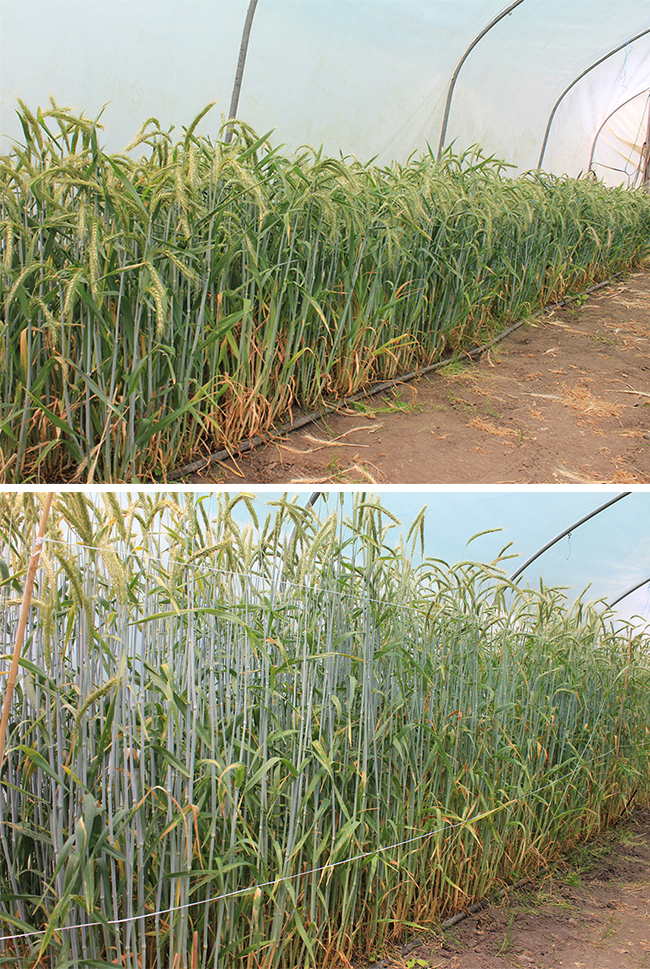 Plant height is a major factor influencing lodging tolerance. Genes determining plant height count among the priority targets for the improvement of orphan crops to drive production system diversification as a support for human nutrition. Plant height is a quantitative inherited trait with complex genetic architecture in rye, rendering the genetic improvement of this trait a challenging task. As a consequence, current rye varieties are characterized by a much lower HI as compared to wheat. The dominant dwarfing gene Ddw1 offers a breeder's option to (i.) improve lodging resistance and (ii.) increase the HI of rye.
Plant height is a major factor influencing lodging tolerance. Genes determining plant height count among the priority targets for the improvement of orphan crops to drive production system diversification as a support for human nutrition. Plant height is a quantitative inherited trait with complex genetic architecture in rye, rendering the genetic improvement of this trait a challenging task. As a consequence, current rye varieties are characterized by a much lower HI as compared to wheat. The dominant dwarfing gene Ddw1 offers a breeder's option to (i.) improve lodging resistance and (ii.) increase the HI of rye.
We have developed novel Ddw1 markers and applied a so-called SMART Breeding (Selection with Markers and Advanced Reproductive Technologies) strategy for tapping this valuable gene variant from a plant genetic resource. Homozygous semi-dwarf as well as near isogenic tall single-cross testers have been established in the male sterility inducing Pampa (P) cytoplasm in 2019 for the first time ever. In RYE-SUS, these new seed-parent genotypes will be crossed with different pollen parent lines carrying defined restorer-of-fertility genes for P (Rfp) leading to new phenotypes and crop varieties for the improvement of plant health, protection from ergot infestation, production of healthy grain and resilience of rye cultivation. While the technology of hybrid breeding supports the development of rye prototypes with novel plant architecture as well as the precise evaluation of these new genotypes in multiple environments, the knowledge gained will be applied within RYE-SUS for the genetic improvement of open pollinating cultivars with simpler and less expensive breeding procedures and shorter development cycles as well.

